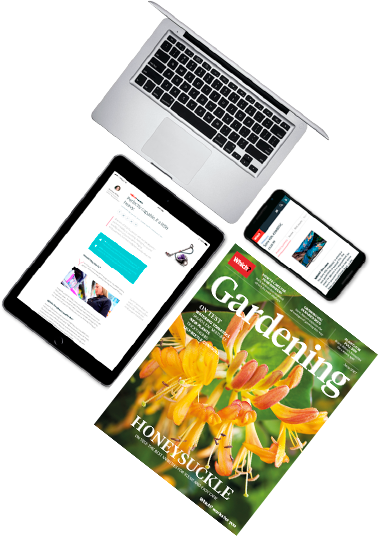User guide
Finding your way around the guide
To navigate between pages, click or tap the arrows to go forwards to the next page or backwards to the previous one. The arrows can be found either side of the page and at the bottom, too (circled in green, below).


Menu/table of contents
Click or tap on the three horizontal lines in the top-right of your screen to open the main menu/table of contents. This icon is always visible whether you're using a computer, tablet or smartphone. The menu will open on top of the page you’re on. Click on any section title to visit that section. Click the cross at any time to close the table of contents.
Text size
On a computer, you'll see three different sized letter 'A's in the top-right of your screen. On a smartphone or tablet these are visible when you open the menu (see above). If you’re having trouble reading the guide, click or tap on each of the different 'A's to change the size of the text to suit you.
Pictures
On some images you'll see a blue double-ended arrow icon. Clicking or tapping on this will expand the picture so you can see more detail. Click or tap on the blue cross to close the expanded image.
Where we think a group of images will be most useful to you, we've grouped them together in an image gallery. Simply use the blue left and right arrows to scroll through the carousel of pictures.
Links
If you see a word or phrase that's bold and dark blue, you can click or tap on it to find out more. The relevant website will open in a new tab.
Jargon
If you see a word or phrase underlined, click or tap on the word and small window will pop up with a short explanation. Close this pop-up by clicking or tapping the cross in the corner.
Help
On a computer, you'll see a question mark icon in the top-right of your screen. On a smartphone or tablet this is visible when you open the menu (see above).
Clicking or tapping on the question mark will open this user guide. It opens on top of the page you're on and you can close it any time by clicking or tapping the cross in the top-right corner.
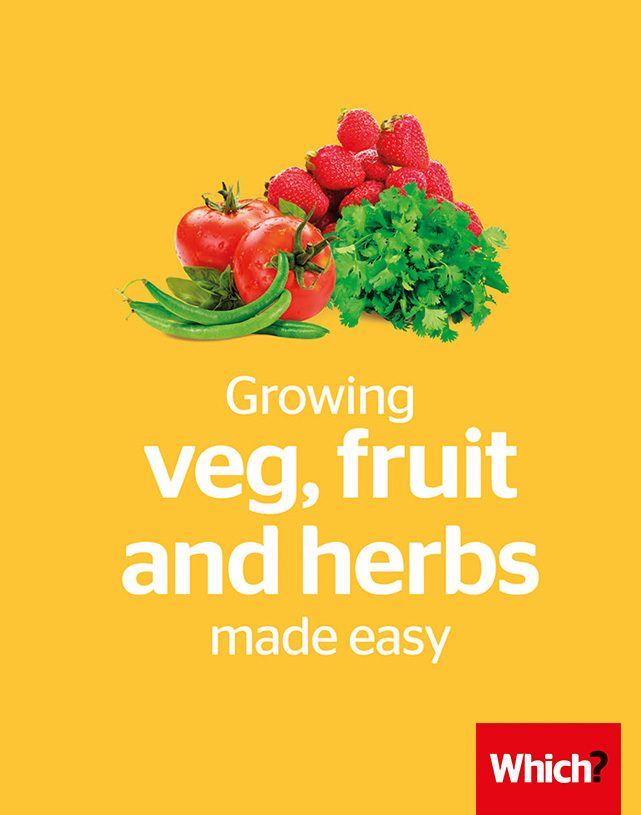
Juicy fruit: rhubarb, strawberries, blueberries, pears and plums
For the ripest, juiciest fruits, we say grow your own.
Rhubarb
Rhubarb is unique in that it’s technically a vegetable (a leaf stalk) but is most often used in desserts – you can even dip the stalks in sugar and eat them raw. It’s also a herbaceous perennial, Herbaceous perennialA plant that lives for several years. Each autumn the stems die and need to be cut down. The plant sends up new stems in spring. dying down in autumn only to bounce back with incredible vigour in the spring. And it can be forced to produce sweeter and more succulent sticks.
For the best flavour, it’s worth investing in a named variety of rhubarb, as it will give you years of eating. We recommend ‘Valentine’ for good taste and looks, and ‘The Sutton’ for its sweet flavour. ‘Livingstone’ is a good autumn cropper and ‘Timperley Early’ is the best for forcing.
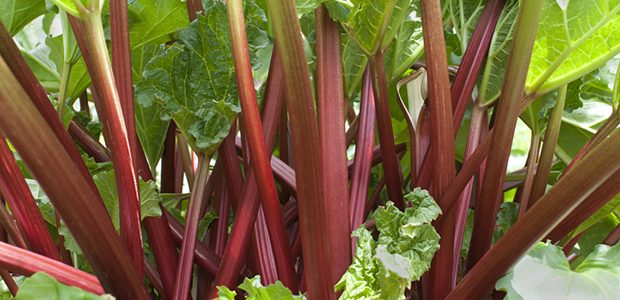
How to grow
- The best time to plant rhubarb crowns is November to December when they are dormant, but you can wait until spring.
- Rhubarb does best in a sunny spot with rich, moist soil that doesn’t get waterlogged. Give it at least 1m to spread and dig in plenty of manure or compost. Don’t pick in the first year after planting. Mulch MulchA layer of material applied to the surface of the soil to keep soil moist, reduce weeds and improve the health of the soil. in the autumn.
- Get an even earlier crop by covering the clump with a terracotta forcing pot or a plastic dustbin in January. The rhubarb crowns need a cold period followed by a frost-free period in the dark to produce a good flush of pale, succulent stalks.
- Harvest your rhubarb from April onwards. Pull the stalks rather than cut them. Make sure you leave three or four strong stems and keep pulling the young tender ones. Stop picking in late June.
Propagate large clumps of rhubarb by splitting off younger pieces from the outside with a spade. Pieces with a couple of healthy buds can be replanted and should produce a vigorous new clump.
Strawberries
Most conventional strawberry plants are propagated from runners RunnersA baby plantlet that the main plant sends out as a way of increasing the numbers of plants. It will root when it touches the ground. and sold as barerooted plants. But, to grow lots of small-fruited wild or alpine strawberries, the best method is to grow them from seed. They make good container or hanging-basket plants and will grow happily as ground cover in a slightly shady part of the garden.
Varieties
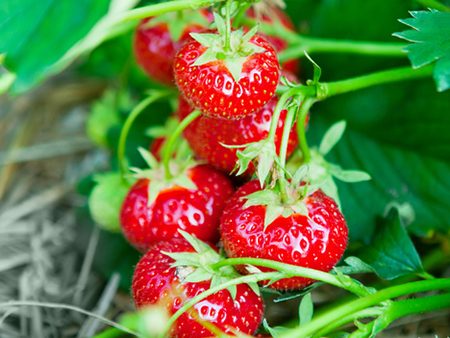
- Summer varieties: for the best strawberries throughout the summer, grow ‘Darlisette’ for an early crop, ‘Elsanta’ and ‘Sonata’ for midsummer, and ‘Malwina’ for a late July crop.
- Plants grown from seed: ‘Florian’ (F1) F1F1 varieties are vegetable and annual flower plants that are more expensive than ordinary varieties as you cannot save their seed. The only way to produce them is by crossing two specific parents. is the best large-fruited variety and ‘Baron Solemacher’ is the best alpine strawberry.
- Everbearers: we recommend ‘Finesse’ for the biggest crop in June and September. ‘Albion’ is good for pots and ‘Malling Opal’ is a later fruit, yielding through to September.
How to grow
- Plant in well-drained soil in sun, 30cm apart, in rows 60–70cm apart and with the growing tip (crown) just above soil level. Water well until plants are established, then water during dry summer weather, aiming to wet the soil only.
- Remove runners in the first year to encourage plants to establish. Protect fruits from slugs and birds; use straw or mats to keep fruits off the soil.
- Feed with Growmore or Vitax Q4 as per the instructions in spring, and liquid feed with tomato food (or similar) occasionally during summer. Take care not to overfeed, as it reduces crops. Remove dead leaves from everbearers and summer-fruiting varieties at the end of the season.
- Verticillium wilt is a soil-borne fungus that makes leaves wilt, turn brown and die. There’s no cure, so remove affected plants and don’t replant strawberries in the same area.
- To grow plants from seed, scatter thinly over seedling compost in a tray between December and March. Cover lightly with more compost and keep the surface moist. Transplant seedlings individually into small pots. Once they are small rosettes, plant in the ground in a sunny, well-drained spot.
Grey mould (botrytis) infection often only becomes visible on strawberries when the fruits ripen, so keep rain off the flowers if possible.
Read about the signs and symptoms of grey mould by visiting the Which? Gardening Helpdesk.
Blueberries
Blueberries are available all year round in the supermarket. They’re pricey, though, and shipped in from far-flung places, so there’s lots of satisfaction to be had from growing your own. They need an acidic soil, but anyone can grow them in a patio container using ericaceous compost. They are long-living plants, so a couple of years invested in growing the right variety will pay dividends for years to come.
There are lots of varieties available and most garden centres stock a good selection; they’re readily available online, too. We recommend ‘Chandler’ and ‘Toro’ for the biggest yield, ‘Ozark Blue’ as the next-most-efficient cropper and ‘Spartan’ as the longest cropper. If you need a compact plant, go for ‘Nui’.
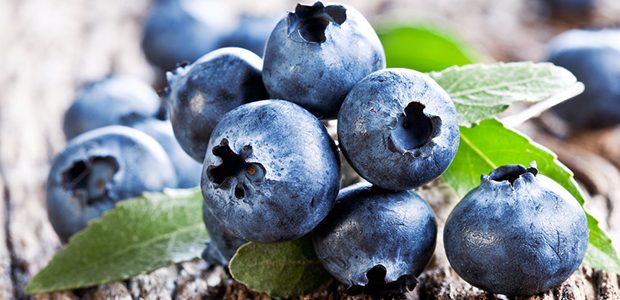
How to grow
- Most gardeners will find it easier to grow blueberries in a container filled with ericaceous compost.
- When you buy a plant in a small pot, only repot once the roots fill the pot and then only into a slightly larger container, adding fresh ericaceous compost around the edges.
- Feed with an ericaceous fertiliser and water with rainwater. Keep the compost moist, but not waterlogged.
- The main pest is the blackbird and other fruit-eating birds. Be fastidious in covering your plants with netting to defeat them.
- To prune in the first couple of years, shorten any wayward shoots and aim for a neat, open-centred bush. Thereafter, prune a third of the oldest branches to their base in late winter to give a balance of one, two and three-year-old wood.Tip
Blueberries are self-fertile, so you only need one plant, although having more than one will improve the amount of fruits that set.
Pears
Pears are attractive trees, especially when laden with blossom or fruit. They needn’t take up much room either, as they’re easy to train flat against a wall or fence. Think about buying one in October, because autumn and winter are the best times to plant.
If you’re looking for a pear that’s good for cooking, we recommend ‘Improved Fertility’. For tasty crops, choose from ‘Louise Bonne of Jersey’ and ‘Williams’ Bon Chrétien’.
How to grow
- Pears need a sunny, sheltered spot and struggle in dry or chalky soil. In the north especially, they’re most likely to crop well when trained against a south- or west-facing wall or fence as a fan, cordon or espalier.
- Avoid having a heavy crop, which results in poor-quality fruit and overladen branches, which are liable to break. As soon as the fruits set, thin them so they’re 10–15cm apart.
- Pears are best stored loose and left unwrapped. Varieties picked before mid-September don’t store well, but later varieties may keep for at least a month in a fridge or cellar, as long as they’re picked under-ripe with the stalk intact. ‘Conference’ may even keep until Christmas.
If you only have room for one tree, make sure there’s a pear tree in a nearby garden and opt for a different variety. Even supposedly self-fertile pears crop best if pollinated by another variety.
Plums
Unlike some fruit, plums don’t ripen well once off the tree, so shop-bought ones are unlikely to ever be as sweet or juicy as those eaten fresh when picked at their prime. Late summer is a good time to find out what you’re missing if there’s a pick-your-own plum grower in your area or, better still, a plum festival. You could then buy a tree of your favourite variety in the autumn or winter – the best time to plant.
Plums are easy to grow in a sunny, sheltered spot, as long as your soil isn’t dry and chalky.
For the best-tasting plums, we recommend ‘Burbank’s Tangerine’, ‘Haganta’ and ‘Avalon’, which is also early to ripen. ‘Victoria’ is also worth considering as it is very reliable, even though it is also disease-prone.
How to grow
- Plums are grafted onto a rootstock, which determines the vigour and ultimate size of the tree, and also how quickly it starts fruiting. When planting, ensure the bump where the trunk joins the rootstock is just above the soil surface.
- Plums need little pruning once established and should never be pruned in winter, as this is when they’re most vulnerable to infection by bacterial canker and silver leaf disease. Paint all cuts as soon as they’re made with a wound paint.
- To renovate an old tree, remove dead, damaged or badly placed growth. Cut out any twiggy leafless growth from the centre and any vertical branches. Pull off any shoots that have sprouted at the base. Find the right secateurs
Looking for a decent pair of secateurs to handle all your pruning throughout the year? Check out our guide to buying the right secateurs. Which? members can log in to find out which ones were named as Best Buys.


